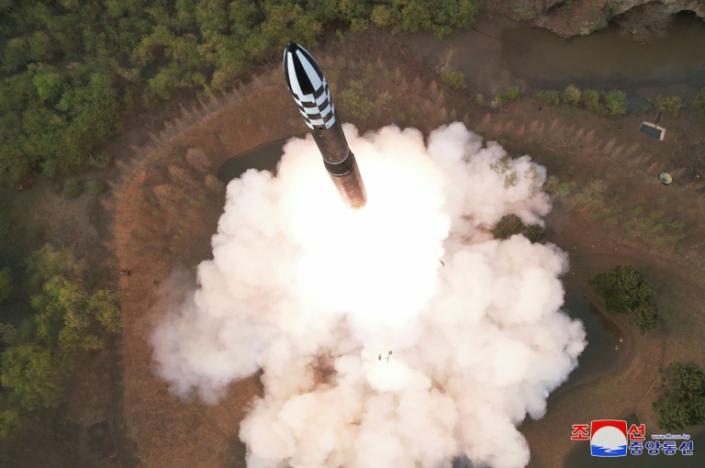
The United States, Japan and South Korea aim to share North Korean missile warning data before the end of 2023, the three countries said on Saturday after a record number of missile tests by Pyongyang this year .
Leaders of the three allies pledged to share real-time data at a summit in the Cambodian capital Phnom Penh in November.
North Korea has accelerated its military development since diplomatic efforts collapsed in 2019, carrying out a series of tests of banned weapons, including test-firing several intercontinental ballistic missiles.
The defense chiefs of the United States, Japan and South Korea announced the data-sharing agreement after meeting at a forum in Singapore.
The three parties “acknowledged trilateral efforts to activate a data-sharing mechanism to exchange real-time missile warning data before the end of the year in order to improve each country’s ability to detect and to assess missiles launched” by North Korea, according to their joint statement.
US Secretary of Defense Lloyd Austin and his Japanese and South Korean counterparts Yasukazu Hamada and Lee Jong-sup met on the sidelines of the Shangri-La Dialogue defense summit.
They “discussed the growing nuclear and missile threats from the Democratic People’s Republic of Korea (DPRK) as well as efforts to strengthen trilateral security exercises and address common security challenges in the Indo-Pacific region,” it said. the press release.
South Korea’s Defense Ministry said in a separate statement that it is “committed to making further progress in the coming months towards activating a real-time warning information sharing mechanism. missiles”.
Hamada told a press conference that the initiative “will improve the ability of countries to detect and assess the threat of missiles launched by North Korea, and we will work hard to achieve this as soon as possible.”
— “Serious threat” —
Pyongyang’s record number of launches this year includes the test-firing of the country’s first solid-fueled ballistic missile – a key technical breakthrough for its military.
The United States and South Korea have in turn stepped up their defense cooperation, holding a series of major military exercises, including two trilateral exercises involving Japan this year.
North Korea attempted to launch a spy satellite this week, but it ended up crashing into the sea after a rocket failed.
Pyongyang does not have a functioning satellite in space and Kim has made developing a military spy satellite a top priority, despite UN resolutions banning the use of such technology.
Pyongyang said its weapons were intended to defend against what it describes as aggression from the United States and South Korea.
Last year, Kim declared his country an “irreversible” nuclear power and called for an “exponential” increase in the production of weapons, including tactical nuclear weapons.
The North’s weapons of mass destruction and ballistic missile programs “pose a grave threat to international peace and stability,” the United States, Japan and South Korea said in their statement.
skc/wd/pbt

